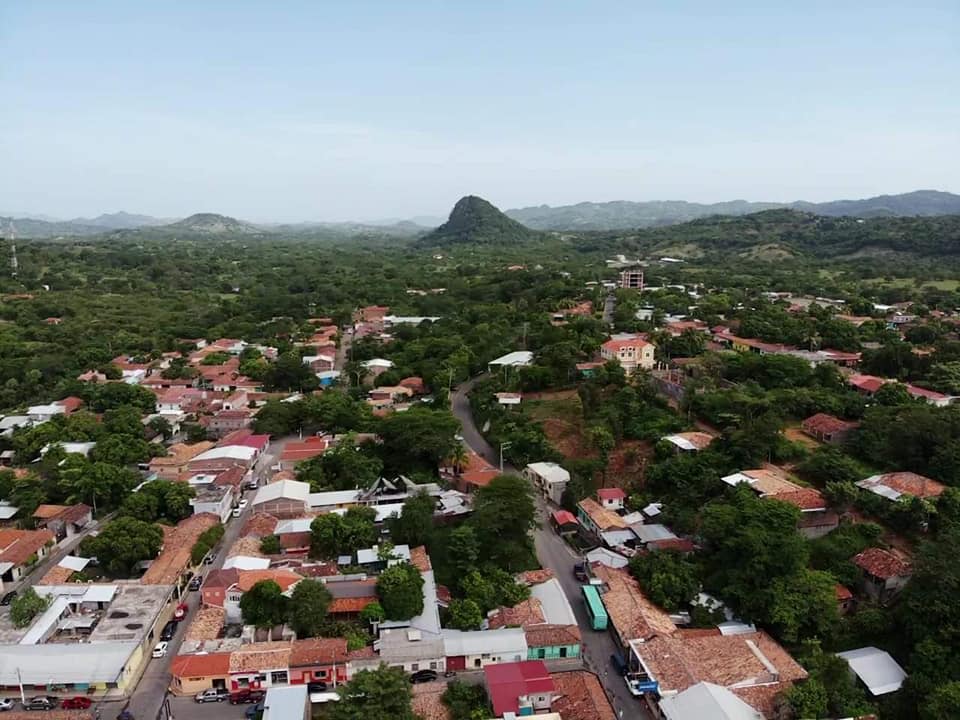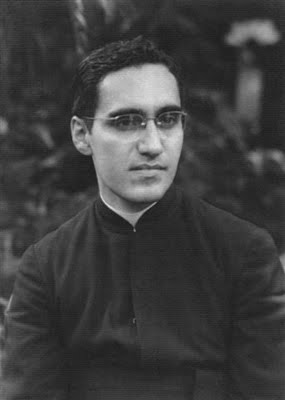|
Anamorós
Anamorós is a Municipalities of El Salvador, municipality in the La Unión Department, La Unión department of El Salvador. The associated Roman Catholic, Catholic parish was the first post of future archbishop and martyr Óscar Romero. History The name of Anamorós is believed to come from the Lencan languages, Lenca language meaning Maizal (Corn field). However there are other possible interpretations. It is unknown when the village of Anamorós was first founded. There are some recorded documents suggesting that it may be between 1574 and 1689.Dirección Nacional de Patrimonio Cultural, Coordinación de Zonas y Monumentos históricos – CONCULTURA, Ficha de Centros Históricos, La Unión Anamorós, Pág.3 With the name and its location in the middle of Lenca former territory, there is no doubt the Lenca people were in Anamorós before the Spanish, but Jorge Larde y Larin (from El Salvador´s Ministry of Culture) claims it was not really a village or town prior to Spanish ... [...More Info...] [...Related Items...] OR: [Wikipedia] [Google] [Baidu] |
Nueva Esparta, El Salvador
Nueva Esparta is a municipality in the northeasternmost zone of El Salvador, inside La Unión Department. The municipality is politically divided into the central Pueblo Nueva Esparta, six outlying canton communities and 31 caserios (smaller community outgrowths from the pueblo or canton communities). Geography Location To the north of the municipality lies the border with Honduras and the municipality of Polorós; to the east, municipios Polorós and Concepción del Oriente; to the south, Anamorós and El Sauce; to the west, municipalities of Lislique and Anamorós. The city is from San Salvador, located north of the Ruta Militar highway along a rural road. Geographic Coordinates: 13 degrees 54’ 00” LN (North), 13 degrees 42’ 35” LN (South), 87 degrees 47’ 48” LN (East), and 87 degrees 53’ 36” LN (West). Altitude (city center): above sea level (at the center of the town), although some areas around the town reach over above sea level. Territorial Extension: ... [...More Info...] [...Related Items...] OR: [Wikipedia] [Google] [Baidu] |
Óscar Romero
Óscar Arnulfo Romero y Galdámez (15 August 1917 – 24 March 1980) was a prelate of the Catholic Church in El Salvador. He served as Auxiliary Bishop of the Archdiocese of San Salvador, the Titular Bishop of Tambeae, as Bishop of Santiago de María, and finally as the fourth Archbishop of San Salvador. As archbishop, Romero spoke out against social injustice and violence amid the escalating conflict between the military government and left-wing insurgents that led to the Salvadoran Civil War. In 1980, Romero was shot by an assassin while celebrating Mass. Though no one was ever convicted for the crime, investigations by the UN-created Truth Commission for El Salvador concluded that Major Roberto D'Aubuisson, a death squad leader and later founder of the right-wing Nationalist Republican Alliance (ARENA) political party, had ordered the killing. In 1997, Pope John Paul II bestowed upon Romero the title of Servant of God, and a cause for his beatification was opened by ... [...More Info...] [...Related Items...] OR: [Wikipedia] [Google] [Baidu] |
La Unión Department
La Unión () is a department of El Salvador. It is located in the eastern part of the country and its capital is La Unión. It covers a total of and has a population of 263,200. The department was created on June 22, 1865, and the city of La Unión was made its capital. The Conchagua Temple was built in 1693 and it is one of tourist attractions of the department, as well as containing archeological ruins in Intipucá and Meanguera. Municipalities * Anamorós * Bolívar * Concepción de Oriente * Conchagua * El Carmen * El Sauce * Intipucá * La Unión * Lislique * Meanguera del Golfo * Nueva Esparta * Pasaquina * Polorós * San Alejo * San José * Santa Rosa de Lima * Yayantique * Yucuaiquín Natural resources The most important agricultural products are coffee, grass, fruits, cocoa, oleaginous seeds, and sugar cane. The manufacturing of palm and tortoiseshell products, panela, mangrove extract, and fish. It also has reserves of gold, iron Iron () ... [...More Info...] [...Related Items...] OR: [Wikipedia] [Google] [Baidu] |
Departments Of El Salvador
El Salvador is divided into 14 departments (Spanish: ''departamentos'') for administrative purposes, subdivided into 262 municipalities (''municipios''). The country is a unitary state. Departments See also * El Salvador * List of cities in El Salvador * Municipalities of El Salvador *Geography of El Salvador * Ranked list of Salvadoran departments * List of Salvadoran departmental capitals * Salvadoran Departments by HDI *Department (country subdivision) *Municipality A municipality is usually a single administrative division having corporate status and powers of self-government or jurisdiction as granted by national and regional laws to which it is subordinate. The term ''municipality'' may also mean the go ... * ISO 3166-2:SV References {{El Salvador topics Subdivisions of El Salvador Lists of subdivisions of El Salvador Departments, El Salvador ... [...More Info...] [...Related Items...] OR: [Wikipedia] [Google] [Baidu] |
Lenca
The Lenca or Lepawiran "people of the jaguar" are from present day southwest Honduras and eastern El Salvador in Central America. They once spoke many Dialects such as Chilanga, Putun, Kotik etc. Although there were different dialects, they understood and coexisted with each other. These dialects are now nearly extinct. In Honduras, the Lenca are the largest tribal group, with an estimated population of more than 450,000. The pre-Conquest Lenca had frequent contact with various Mayan groups as well as other sovereign tribal people of the territory of present-day Mexico and Central America. The origin of Lenca populations has been a source of ongoing debate among anthropologists and historians. Research has been directed to gaining archaeological evidence of the pre- colonial History Pre-European era Since pre-European times the Lencas occupied various areas of what is now known as Honduras and El Salvador. The Salvadoran archaeological site of Quelepa (which was inhabited ... [...More Info...] [...Related Items...] OR: [Wikipedia] [Google] [Baidu] |
Lislique
Lislique is a municipality in the La Unión department La Unión () is a department of El Salvador. It is located in the eastern part of the country and its capital is La Unión. It covers a total of and has a population of 263,200. The department was created on June 22, 1865, and the city of L ... of El Salvador. As of 2007, the population was 13,385. References {{La Unión Department Municipalities of the La Unión Department ... [...More Info...] [...Related Items...] OR: [Wikipedia] [Google] [Baidu] |
Santa Rosa De Lima, El Salvador
Santa Rosa de Lima is a municipality in La Unión Department of El Salvador. The city is named after St. Rose of Lima, born on 1586 in Lima (Peru). Its "fiestas patronales" are during the month of August, when the city gets full of vendors from around the country selling a wide range of articles and food. Economy The city is also known as the "capital of commerce" in La Unión and is famous for its cheese, gold and livestock trade. And they have a big commerce of cows, pigs and clothing. Santa Rosa de Lima is a city which is the heart of commerce. The city has many fast food places and traditional also like the famous pupusas. The city is located a few kilometers from the Honduras border. During the Honduras/El Salvador war in the late 60's, the city got hundreds of expatriated Salvadorans from Honduras. At which time, there ensued an economic depression that lasted just before the eruption of the civil war in 1979. Geography The city is located between the Pacific Ocean plains ... [...More Info...] [...Related Items...] OR: [Wikipedia] [Google] [Baidu] |
Vista De Pueblo De Anamoros La Union
Vista usually refers to a distant view. Vista may also refer to: Software *Windows Vista, the line of Microsoft Windows client operating systems released in 2006 and 2007 *VistA, (Veterans Health Information Systems and Technology Architecture) a medical records system of the United States Department of Veterans Affairs and others worldwide *VISTA (comparative genomics), software tools for genome analysis and genomic sequence comparisons * VistaPro, and Vista, 3D landscape generation software for the Amiga and PC *VIsualizing STructures And Sequences, bioinformatics software Organizations and institutions *Vista Entertainment Solutions, a New Zealand software company specializing in solutions for the cinema industry *AmeriCorps VISTA, a national service program to fight poverty through local government agencies and non-profit organizations * Ventura Intercity Service Transit Authority, a public transportation agency in Ventura County, California, US *Vista Community College, now ... [...More Info...] [...Related Items...] OR: [Wikipedia] [Google] [Baidu] |
Canton (administrative Division)
A canton is a type of administrative division of a country. In general, cantons are relatively small in terms of area and population when compared with other administrative divisions such as counties, departments, or provinces. Internationally, the most politically important cantons are the Swiss cantons. As the constituents of the Swiss Confederation, theoretically and historically, they are semi-sovereign states. The term is derived from the French word ''canton'', meaning "corner" or "district" (from which " cantonment" is also derived). In specific countries Cantons exist or previously existed in the following countries: * Cantons of Belgium * Cantonal Government of Bohol *Cantons of Bolivia * Cantons of Bosnia and Herzegovina: federal units of the Federation of Bosnia and Herzegovina *Canada: Canadian French equivalent for the English word "township", since the translation ''municipalité'' is already used for a different level of government (see township). ** Cantons ... [...More Info...] [...Related Items...] OR: [Wikipedia] [Google] [Baidu] |
Salvadoran Lenca
Salvadoran Lenca was spoken in Chilanga and Potón. Lencans had arrived in El Salvador about 2,000 years B.C.E and founded the site of Quelepa. One speaker remains in Potón. Salvadoran Lenca is of the small language family of Lencan languages that consists of two languages one of which is the Salvadoran Lenca and the Honduran Lenca. There have been attempts to link the Lencan languages to other languages within their groupings, but there has been no success. Campbell, Lyle. ''Glossary of Historical Linguistics''. Edinburgh University Press, 2007. Phonology Consonants Vowels Lenca Potón As of 2012, Mario Salvador Hernández of Guatajiagua is the last speaker of Lenca Potón, which differs from the version spoken in Chilanga, where the language has disappeared. Research in 2004 by the University of Central America José Simeón Cañas Central American University ( es, Universidad Centroamericana "José Simeón Cañas"), also known as UCA El Salvador, is a p ... [...More Info...] [...Related Items...] OR: [Wikipedia] [Google] [Baidu] |
Farabundo Martí National Liberation Front
The Farabundo Martí National Liberation Front ( es, Frente Farabundo Martí para la Liberación Nacional, FMLN) is a left-wing political party in El Salvador. The FMLN was formed as an umbrella group on 10 October 1980, from five leftist guerrilla organizations; the Fuerzas Populares de Liberación Farabundo Martí (FPL), the People's Revolutionary Army (ERP), the Resistencia Nacional (RN), the Partido Comunista Salvadoreño (PCS) and the Partido Revolucionario de los Trabajadores Centroamericanos (PRTC). The FMLN was one of the main participants in the Salvadoran Civil War. After the Chapultepec Peace Accords were signed in 1992, all armed FMLN units were demobilized and their organization became a legal left-wing political party in El Salvador. On 15 March 2009, the FMLN won the presidential elections with former journalist Mauricio Funes as its candidate. Two months earlier in municipal and legislative elections, the FMLN won the majority of the mayoralties in the c ... [...More Info...] [...Related Items...] OR: [Wikipedia] [Google] [Baidu] |




